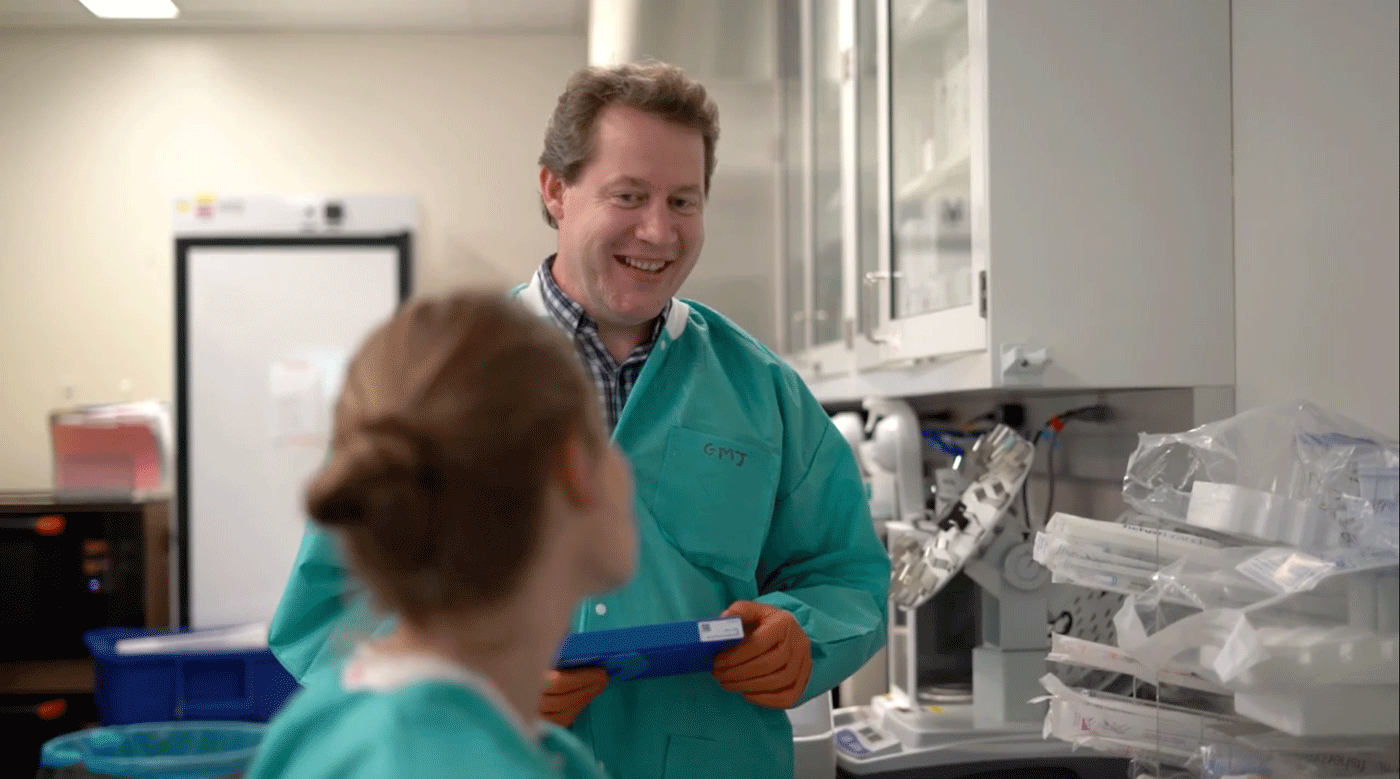August 16, 2020
HJF scientist Dr. Gordon Joyce spent much of 2020 focused on understanding and documenting the structural biology of the novel coronavirus, SARS-CoV-2. As the head of the Structural Biology Lab at the Walter Reed Army Institute of Research, he successfully produced the most detailed atomic level view of the structure of the SARS-CoV-2 spike protein receptor binding domain, which is the part of the virus that binds to the lungs. This detailed understanding of the structure has been critical to vaccine discovery and development efforts.

The research is part of the coronavirus vaccine development at the Emerging Infectious Diseases Branch of the Walter Reed Army Institute of Research. Led by Army researcher Dr. Kayvon Modjarrad, these efforts have developed a vaccine candidate known as SpFN (Spike Ferritin Nanoparticle). The SpFN vaccine is unique among other COVID-19 vaccines in development because the nanoparticle’s multifaceted surface has been engineered to present specific pieces of the coronavirus spike protein (the part of the virus that attaches to the lungs) to the immune system many times over to elicit a strong immune response.
The researchers are taking a strategic long-term approach to vaccine development. In the future, the vaccine might be adapted so that different faces of the nanoparticle present different coronaviruses to the immune system at the same time. In addition, the vaccine platform could pave the way for a universal vaccine to protect against not only the current virus, but also other known and unknown coronaviruses that could arise.